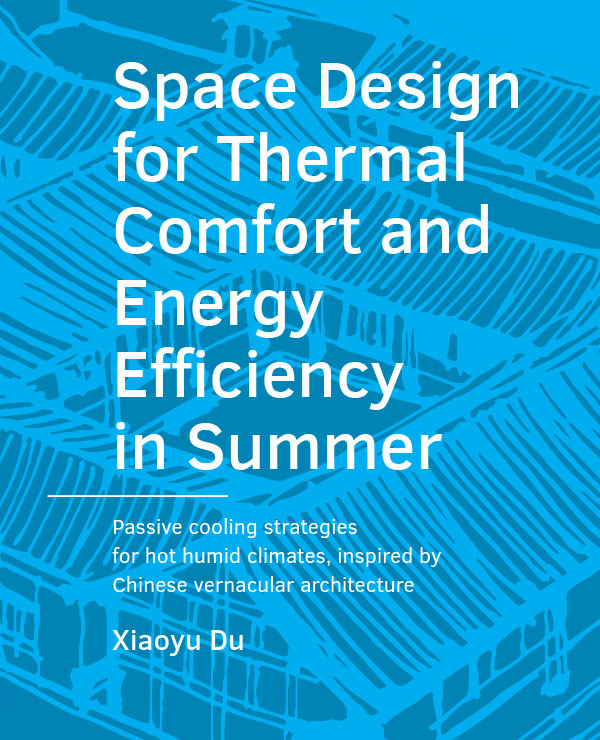Using spatial indicators to predict ventilation and energy performance
Correlation analysis for an apartment building in five Chinese cities
DOI:
https://doi.org/10.7480/abe.19.10.4111Abstract
In the early design stages, architects are in constant search of a design direction that can determine the success or failure of the final design. However, in real design practice, most of the prediction methods for building performances, in this paper energy and thermal comfort, are utilised in the later design stages. Spatial configuration is one of the most important issues for architectural design in the early design stage. This study investigates the correlations between the spatial indicators connected with architectural design and the building physics indicators ventilation performance and energy performance. The main objective is to explore the potential of applying spatial indicators using space syntax to predict ventilation performance and energy performance in order to support architects for the evaluation of their concept and schemes in early design stage. The layout of a high-rise apartment in China in five different cities is chosen as a case study. The results show that the selected three indicators: connectivity value, air change rate and annual cooling saving ratio are linearly correlated, not just at building level but also at room level. R2, the correlation coefficient of determination, is between 0.53 and 0.90 (except for the case of Chongqing at building level).
References
AIA. (2012). An architect’s guide to integrating energy modeling in the design process. The American Institute of Architecture
AlAnzi, A., Seo, D., & Krarti, M. (2009). Impact of building shape on thermal performance of office buildings in Kuwait. Energy Conversion and Management, 50(3), 822-828. doi: 10.1016/j.enconman.2008.09.033
Appleton, J. (1975). The Experience of Landscape London: John Wiley and Sons.
Attia, S., Gratia, E., De Herde, A., & Hensen, J. L. M. (2012). Simulation-based decision support tool for early stages of zero-energy building design. Energy and Buildings, 49, 2-15. doi: 10.1016/j.enbuild.2012.01.028
Benedikt, M. L. (1979). To take hold of space: isovists and isovist fields. Environment and planning B, 6, 47-65.
Chen, Q. (2009). Ventilation performance prediction for buildings: A method overview and recent applications. Building and Environment, 44(4), 848-858. doi: 10.1016/j.buildenv.2008.05.025
Choi, A., Kim, Y., Oh, E., & Kim, Y. (2006). Application of the space syntax theory to quantitative street lighting design. Building and Environment, 41(3), 355-366. doi: 10.1016/j.buildenv.2005.01.026
Choi, Y. (2013). Comparative Evaluation of Unit Layout Alternatives in Plan-Extension Remodeling of
Domestic Korean Apartment. Journal of Asian Architecture and Building Engineering, 12(2), 205-212.
Cooper, V. A. (1998). Occupancy Comfort and Energy Consumption in Naturally Ventilated and Mixed Mode Office Buildings UMIST.
Dawes, M. J., & Ostwald, M. J. (2014). Prospect-Refuge theory and the textile-block houses of Frank Lloyd Wright: An analysis of spatio-visual characteristics using isovists. Building and Environment, 80, 228-240. doi: 10.1016/j.buildenv.2014.05.026
Depecker, P., Menezo, C., Virgone, J., & Lepers, S. (2001). Design of buildings shape and energetic consumption. Building and Environment, 36, 627–635.
Dursun, P. (2007). SPACE SYNTAX IN ARCHITECTURAL DESIGN. Paper presented at the 6th International Space Syntax Symposium, İstanbul.
Foucquier, A., Robert, S., Suard, F., Stéphan, L., & Jay, A. (2013). State of the art in building modelling and energy performances prediction: A review. Renewable and Sustainable Energy Reviews, 23, 272-288. doi: https://doi.org/10.1016/j.rser.2013.03.004
Franz, G., & Wiener, J. M. (2008). From space syntax to space semantics: a behaviorally and perceptually oriented methodology for the efficient description of the geometry and topology of environment. Environment and Planning B:Planning and Design, 35, 574-592.
Hillier, B. (1999). The hidden geometry of deformed grids or, why space syntax works, when it looks as though it shouldn’t. Environment and Planning 26, 169-191.
Hillier, B. (2009). Spatial Sustainability in Cities Organic Patterns and Sustainable Forms. Paper presented at the The 7th International Space Syntax Symposium, Stockholm.
Hillier, B., & Hanson, J. (1984). The social logic of space. Cambridge Cambridge University Press.
Hillier, B., Hanson, J., & Graham, H. (1987). Ideas are in things: an application of the space syntax method to discovering house genotypes. Environment and Planning 14, 363-385.
Hillier, B., & Shinichi, I. (2005). Network and Psychological Effects in Urban Movement. In G. C. Anthony & M. M. David (Eds.), Spatial Information Theory (pp. 475–490). Ellicottville: Springer.
Hiyama, K., & Glicksman, L. (2015). Preliminary design method for naturally ventilated buildings using target air change rate and natural ventilation potential maps in the United States. Energy, 89, 655-666. doi: 10.1016/j.energy.2015.06.026
Julienne, H. (1998). Decoding houses and homes. Cambridge Cambridge University Press.
Li, Y., & Li, X. (2014). Natural ventilation potential of high-rise residential buildings in northern China using coupling thermal and airflow simulations. Building Simulation, 8(1), 51-64. doi: 10.1007/s12273-014-0188-1
Liu, L., Lin, B., & Peng, B. (2015). Correlation analysis of building plane and energy consumption of high-rise office building in cold zone of China. Building Simulation, 8(5), 487-498. doi: 10.1007/s12273-015-0226-7
Mishra, A. K., & Ramgopal, M. (2013). Field studies on human thermal comfort — An overview. Building and Environment, 64, 94-106. doi: 10.1016/j.buildenv.2013.02.015
Schulze, T., & Eicker, U. (2013). Controlled natural ventilation for energy efficient buildings. Energy and Buildings, 56, 221-232. doi: 10.1016/j.enbuild.2012.07.044
Wang, W., Rivard, H., & Zmeureanu, R. (2006). Floor shape optimization for green building design. Advanced Engineering Informatics, 20(4), 363-378. doi: 10.1016/j.aei.2006.07.001
Wiener, J. M., & Franz, G. (2005). Isovists as a means to predict spatial experience and behavior Spatial Cognition IV. Reasoning, Action, Interaction (pp. 42-57): Springer.
Yi, Y. K., & Malkawi, A. M. (2009). Optimizing building form for energy performance based on hierarchical geometry relation. Automation in Construction, 18(6), 825-833. doi: 10.1016/j.autcon.2009.03.006
Zhang, H., Arens, E., Fard, S. A., Huizenga, C., Paliaga, G., Brager, G., & Zagreus, L. (2007). Air movement preferences observed in office buildings. [Research Support, Non-U.S. Gov’t
Research Support, U.S. Gov’t, Non-P.H.S.]. Int J Biometeorol, 51(5), 349-360. doi: 10.1007/s00484-006-0079-y
Zhang, M. (2010). Analysis of the potential of building annual energy-saving using natural ventilation. Paper presented at the the 7th International Conference on Indoor Air Quality, Ventilation and Energy Conservation in Buildings, Syracuse, USA.

